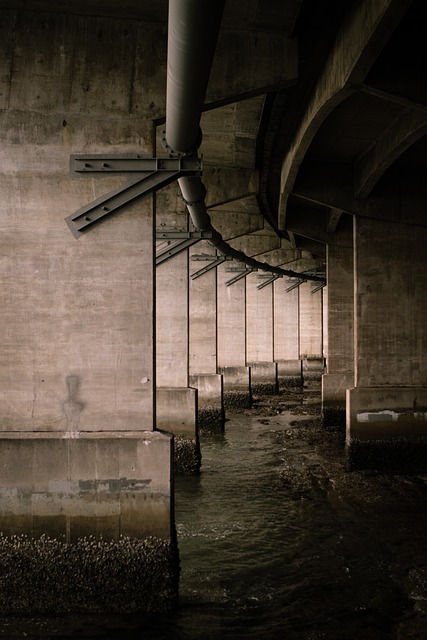Precast and modular construction techniques, aided by bridge structure renderings, revolutionize modern bridge projects. Off-site manufacturing ensures precision, efficiency, and reduced costs. 3D visualizations streamline design, project management, and communication. On-site assembly provides higher quality control while minimizing disruptions in urban areas with tight timelines.
In today’s fast-paced construction industry, precast and modular structures are revolutionizing building processes. This article explores how these innovative techniques enhance efficiency through precise precast components and streamlined modular design. We delve into the art of bridge structure renderings, showcasing the intricate visuals that underpin meticulous engineering. Additionally, we highlight on-site assembly’s role in rapid deployment, minimizing delays, and ensuring timely project completion. Discover how these methods are reshaping the construction landscape.
Precast Components: Building Blocks for Efficiency
Precast components play a pivotal role in modern construction, especially for complex projects like bridge structures. These building blocks, crafted off-site in controlled conditions, offer unparalleled precision and efficiency. Each precast element is designed with meticulous care, ensuring they fit together seamlessly, reducing on-site assembly time and labour costs significantly.
With advanced bridge structure renderings, architects and engineers can envision the final product with remarkable clarity. Precast technology enables the creation of intricate designs, from elegant arches to robust support beams, all while maintaining structural integrity. This level of previsualization streamlines the construction process, allowing for better project management and more accurate scheduling.
Modular Design: Streamlining Construction Processes
Modular design in construction is a game-changer, especially for complex projects like bridge structures. This approach involves creating building components—or modules—in controlled off-site environments, allowing for precise manufacturing and assembly. Each module is designed to fit seamlessly with others, ensuring minimal on-site work and disruptions.
When applied to bridge structures, modular design streamlines construction processes significantly. Precast concrete modules can be produced efficiently, with meticulous attention to detail, and transported to the site ready for installation. This method reduces project timelines, minimizes labour costs, and enhances overall project management, making it an attractive solution for modern infrastructure development.
Bridge Structure Renderings: Visualizing Precision Engineering
Bridge structure renderings play a pivotal role in the construction industry, offering a powerful tool for visualizing precision engineering. With advanced 3D modeling software, architects and engineers can create intricate digital representations of bridges, showcasing every detail from structural components to aesthetic finishes. This level of visualization is transformative, allowing stakeholders to gain a comprehensive understanding of the final product before ground is broken.
By leveraging bridge structure renderings, project teams can identify potential design flaws, streamline construction processes, and enhance overall efficiency. Precise measurements and material specifications are clearly depicted, enabling seamless coordination among various trades. Moreover, these visual aids facilitate effective communication with clients, ensuring their expectations align with the project’s scope and quality.
On-Site Assembly: Rapid Deployment and Reduced Delays
One of the significant advantages of precast and modular structures is their on-site assembly capabilities, which streamline construction processes. Unlike traditional building methods, where components are constructed off-site and then transported to the location, precast units are cast, cured, and inspected at a factory before being delivered to the site. This process ensures higher quality control and precision, reducing potential errors and delays.
On-site assembly for precast structures involves rapid deployment, allowing builders to quickly erect complex bridge structure renderings or other modular designs. The reduced time spent on-site translates into faster project completion, minimizing construction disruptions and costs associated with extended stay. This efficiency is particularly beneficial in urban areas where space is limited and projects need to adhere to strict timelines.
Precast and modular construction techniques, enhanced by advanced bridge structure renderings, offer a compelling path forward for efficient building. By leveraging precise visualizations and standardized components, builders can streamline processes, reduce delays, and deliver high-quality results with remarkable speed. This innovative approach promises to revolutionize the industry, making construction more accessible, affordable, and sustainable. Bridge structure renderings play a pivotal role in this transformation, enabling better planning, collaboration, and ultimately, a new era of rapid and reliable infrastructure development.
